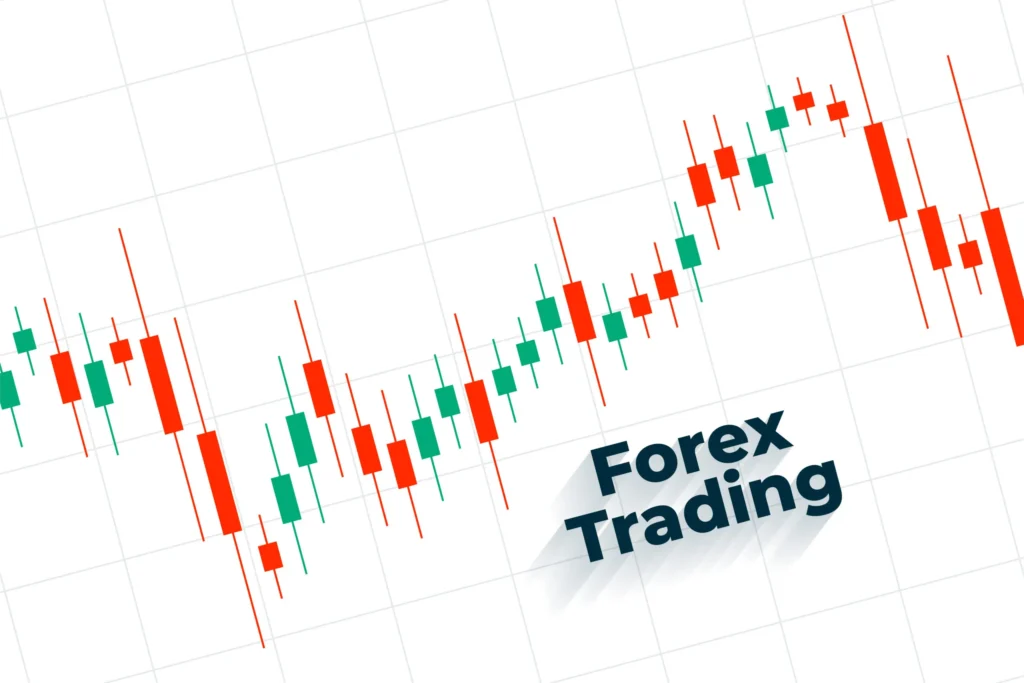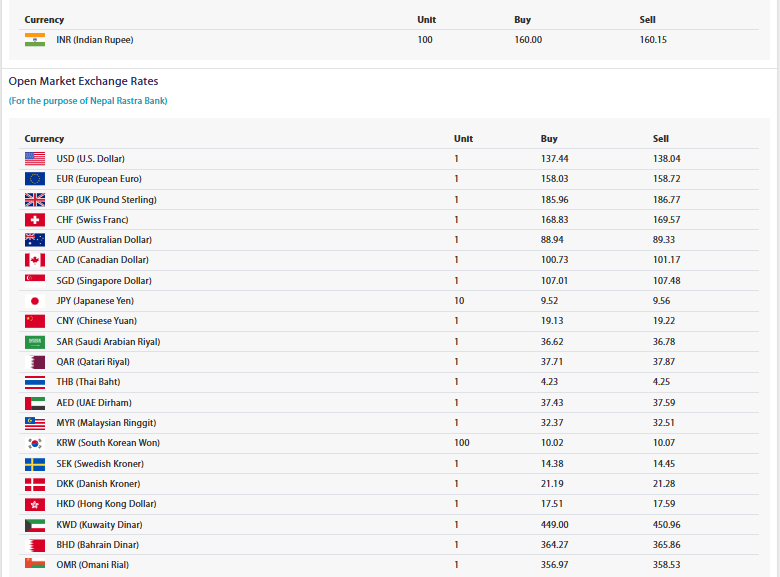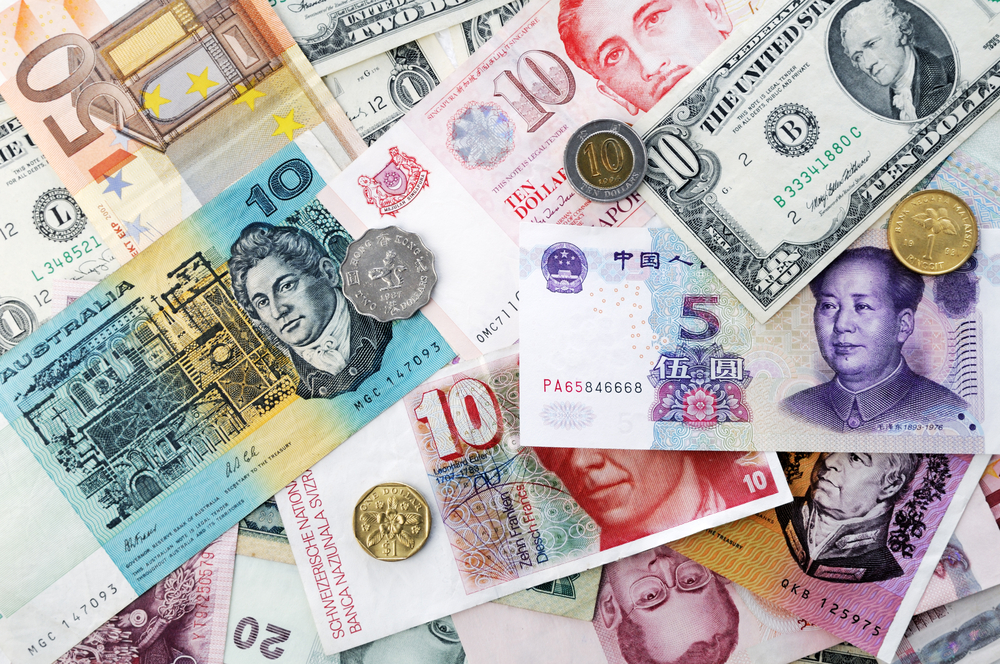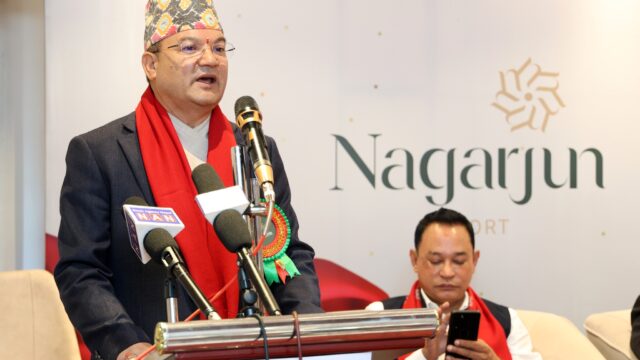The Nepal Rastra Bank (NRB), the central monetary authority of the country, has released the foreign exchange rates applicable for Sunday, reflecting the daily fluctuations in the global currency market. These exchange rates are essential for individuals, traders, importers, and banks who deal with foreign currencies in their transactions.
The new rates determine how much Nepali Rupees (NPR) are required to buy or sell one unit of a foreign currency. NRB has clearly stated that these rates may be updated or revised as per market needs.
US Dollar and Euro Maintain Strong Position
According to the NRB, the buying rate for the US Dollar stands at NPR 137.44, while the selling rate is NPR 138.04. This reflects the continued dominance of the American currency in the international market, especially in the context of remittance inflows and trade settlements.
The Euro, another major global currency, is being traded at NPR 158.03 (buying) and NPR 158.72 (selling). This reflects relative stability in the Eurozone and its influence in Nepal’s import transactions with European nations.

Pound Sterling and Swiss Franc See Steady Movement
The UK Pound Sterling continues to maintain a strong position, with a buying rate of NPR 185.96 and selling rate of NPR 186.77. Similarly, the Swiss Franc is trading at NPR 168.83 (buying) and NPR 169.57 (selling). These European currencies are often used in cross-border remittances and international settlements, especially by Nepali workers abroad.
Oceanic and North American Currencies
The Australian Dollar has been set at NPR 88.94 (buying) and NPR 89.33 (selling), while the Canadian Dollar is pegged at NPR 100.73 and NPR 101.17, respectively. These currencies are significant due to the large number of Nepali students and migrant workers living in Australia and Canada.
Similarly, the Singapore Dollar has been valued at NPR 107.01 (buying) and NPR 107.48 (selling), playing a critical role in business and tourism-related exchanges between Nepal and Southeast Asia.
Asian Currencies and Regional Neighbors
The Japanese Yen, traded in units of 10, has a buying rate of NPR 9.52 and a selling rate of NPR 9.56. The Chinese Yuan is set at NPR 19.13 (buying) and NPR 19.22 (selling), reflecting China’s economic engagement in Nepal, including infrastructure investment and trade.

Among Middle Eastern currencies, the Saudi Arabian Riyal is being exchanged at NPR 36.62 (buying) and NPR 36.78 (selling), and the Qatari Riyal is set at NPR 37.71 (buying) and NPR 37.87 (selling). These two are particularly important because of Nepal’s large migrant workforce in the Gulf countries.
Additional Regional and International Currencies
Other foreign currencies fixed by the NRB include the Thai Baht, which is being traded at NPR 4.23 (buying) and NPR 4.25 (selling), and the UAE Dirham, set at NPR 37.43 (buying) and NPR 37.59 (selling). The Malaysian Ringgit is valued at NPR 32.37 (buying) and NPR 32.51 (selling), important for thousands of Nepali workers residing in Malaysia.
The South Korean Won, calculated per 100 units, stands at NPR 10.02 (buying) and NPR 10.07 (selling). In the Scandinavian region, the Swedish Kroner has been fixed at NPR 14.38 (buying) and NPR 14.45 (selling), while the Danish Kroner is at NPR 21.19 and NPR 21.28, respectively.
Hong Kong Dollar, Kuwaiti Dinar, and Gulf Currency Rates
The Hong Kong Dollar is being traded at NPR 17.51 (buying) and NPR 17.59 (selling), and the Kuwaiti Dinar, known for being one of the world’s strongest currencies, is fixed at a buying rate of NPR 449 and a selling rate of NPR 450.96.

The Bahraini Dinar is listed at NPR 364.27 (buying) and NPR 365.86 (selling), while the Omani Riyal stands at NPR 356.97 (buying) and NPR 358.53 (selling). These rates are of particular interest to the Nepali diaspora in the Middle East.
Indian Rupee Exchange Rate Remains Stable
The Indian Rupee (INR), which is a highly significant currency for Nepal due to open borders and deep trade ties, remains pegged at NPR 160 (buying) and NPR 160.15 (selling) for every 100 INR. The fixed rate helps facilitate cross-border trade and daily transactions, especially in the southern parts of Nepal.
NRB May Revise Rates Based on Market Needs
The Nepal Rastra Bank has mentioned that it retains the authority to modify exchange rates as needed, depending on market conditions and economic indicators. Additionally, it has clarified that the exchange rates offered by commercial banks may differ slightly from the official rates. For the latest updates, individuals and institutions are advised to visit the official website of Nepal Rastra Bank, which publishes daily and real-time foreign exchange information.
As the global economic landscape continues to evolve, the role of foreign exchange becomes increasingly crucial. These rates not only guide economic transactions but also impact remittances, imports, exports, and tourism. Staying informed about these changes is essential for financial planning and international business operations in Nepal.






